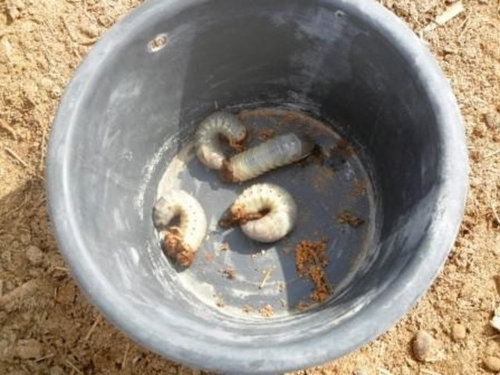Please help identify this worm
shepard.KSA
9 years ago
Related Stories

GARDENING GUIDESHouzz TV: Make a Worm Bin for Rich Soil and Happy Plants
A worm-powered compost bin that can fit under a sink turns food scraps into a powerful amendment for your garden. Here’s how to make one
Full Story
ORGANIZINGHelp for Whittling Down the Photo Pile
Consider these 6 points your personal pare-down assistant, making organizing your photo collection easier
Full Story
ORGANIZING4 Questions to Help You Organize Your Favorite Photos
Organize your keeper photos with a system that's just right for you, whether it's in the cloud or you can hold it in your hand
Full Story
LIFEDecluttering — How to Get the Help You Need
Don't worry if you can't shed stuff and organize alone; help is at your disposal
Full Story
ORGANIZINGGet the Organizing Help You Need (Finally!)
Imagine having your closet whipped into shape by someone else. That’s the power of working with a pro
Full Story
SELLING YOUR HOUSE5 Savvy Fixes to Help Your Home Sell
Get the maximum return on your spruce-up dollars by putting your money in the areas buyers care most about
Full Story
SELLING YOUR HOUSEHelp for Selling Your Home Faster — and Maybe for More
Prep your home properly before you put it on the market. Learn what tasks are worth the money and the best pros for the jobs
Full Story
MOVINGRelocating Help: 8 Tips for a Happier Long-Distance Move
Trash bags, houseplants and a good cry all have their role when it comes to this major life change
Full Story
DECLUTTERINGDownsizing Help: How to Edit Your Belongings
Learn what to take and what to toss if you're moving to a smaller home
Full Story
STANDARD MEASUREMENTSThe Right Dimensions for Your Porch
Depth, width, proportion and detailing all contribute to the comfort and functionality of this transitional space
Full StoryMore Discussions







HIFromCA
Charlie
Related Professionals
Mountain Brook Landscape Architects & Landscape Designers · Allentown Landscape Contractors · Brockton Landscape Contractors · Englewood Landscape Contractors · Fort Atkinson Landscape Contractors · Middletown Landscape Contractors · North Haven Landscape Contractors · South Lake Tahoe Landscape Contractors · Streamwood Landscape Contractors · Norridge Landscape Contractors · Goodlettsville General Contractors · Bryn Mawr-Skyway General Contractors · Lakewood Park General Contractors · Merrimack General Contractors · Nashua General ContractorsFrancoiseFromAix
barbararose21101
barbararose21101
11otis
tapla (mid-Michigan, USDA z5b-6a)
shepard.KSAOriginal Author
shepard.KSAOriginal Author
FrancoiseFromAix
nexev - Zone 8b
11otis
tim45z10
shepard.KSAOriginal Author
pskvorc
tim45z10
nexev - Zone 8b
grubby_AZ Tucson Z9